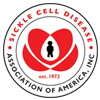Trusted Resources: Evidence & Education
Scientific literature and patient education texts
Phase 3 Study of L-Glutamine Therapy in Sickle Cell Anemia and Sickle ß0-Thalassemia Subgroup Analyses Show Consistent Clinical Improvement
source: American Society of Hematology
year: 2016
authors: Yutaka Niihara, Kusum Viswanathan, Scott T. Miller, Edouard Guillaume, Miren Blackwood, Rafael Razon, Lan Tran, Charles Stark
summary/abstract:Background: Sickle cell disease (SCD) is characterized by continuous oxidative stress through various mechanisms contributing to the pathophysiology and clinical course of sickle cell crises (SCC) and organ damage. L-glutamine is a precursor for the synthesis of essential metabolic redox cofactors including Nicotinamide Adenine Dinucleotide (NAD). Early studies have demonstrated that altered erythrocyte NAD redox potential was improved by oral L-glutamine therapy, suggesting that higher L-glutamine utilization in SCD exceeded de novo synthesis and its depletion played a role in oxidative stress.
A Phase 2 study of Pharmaceutical Grade L-glutamine (L-glutamine) versus placebo showed promising results on clinical endpoints. In a Phase 3 study with 230 SCD patients, randomized 2:1 to L-glutamine or placebo, the median number of SCCs was 25% lower for L-glutamine than placebo (L-glutamine 3.0 vs. placebo 4.0). An analysis of SCC events showed significant differences between groups (p < 0.01). Categories for pre-specified subgroups for Age, Gender and Hydroxyurea (HU) use were defined in the statistical plan. HU use was also a randomization stratification factor since HU is the only FDA-approved drug for SCD treatment. Examination of the HU subgroup for differences in L-glutamine effect across categories (HU vs. no HU) was appropriate since approximately 66% of patients remained on HU throughout the Phase 3 study. To investigate the subgroup treatment effect size, treatment by subgroup interaction and consistency of the primary endpoint across the categories of the subgroups, an examination was performed following the guidelines for reporting subgroup analysis.
Methods: The Negative Binomial Regression (NBR) model was utilized to generate an estimate of treatment effect and treatment by subgroup interactions of the three pre-specified subgroups. SCC events are most accurately described as counts and NBR is specifically intended for modeling count variables, usually for over-dispersed counts as seen in SCD studies. Rates of SCC for each treatment arm in a subgroup (Rate L-glutamine per 48 weeks / Rate placebo per 48 weeks) provide rate ratios, and an estimate of effect size, with 95% confidence intervals. A rate ratio
organization: Emmaus Medical, Inc, Torrance; Brookdale University Hospital and Medical Center, Brooklyn; SUNY Downstate, Brooklyn; Interfaith Medical Center, Brooklynread more
Related Content
-
Sickle Cell Disease (SCD)Sickle cell disease (SCD) is a disease o...
-
Coexistent Sickle Cell Disease Has No Impact on the Safety or Outcome of Lytic Therapy in Acute Ischemic Stroke: Fin...BACKGROUND AND PURPOSE: The recommended ...
-
Isaac Singleton: Sickle Cell Freehttps://www.youtube.com/watch?v=a5mMgnuz...
-
Today’s Faces of Sickle Cell Disease: John Tisdale, MDFor many years, John Tisdale has been wo...
-
Early clinical trial data show gene therapy reversing sickle cell anemiaAfter over a decade of preclin...
-
A multiple drug approach to preventing sickle cell crisisSickle cell disease is characterized by ...
To improve your experience on this site, we use cookies. This includes cookies essential for the basic functioning of our website, cookies for analytics purposes, and cookies enabling us to personalize site content. By clicking on 'Accept' or any content on this site, you agree that cookies can be placed. You may adjust your browser's cookie settings to suit your preferences. More Information
The cookie settings on this website are set to "allow cookies" to give you the best browsing experience possible. If you continue to use this website without changing your cookie settings or you click "Accept" below then you are consenting to this.




 +myBinder
+myBinder
